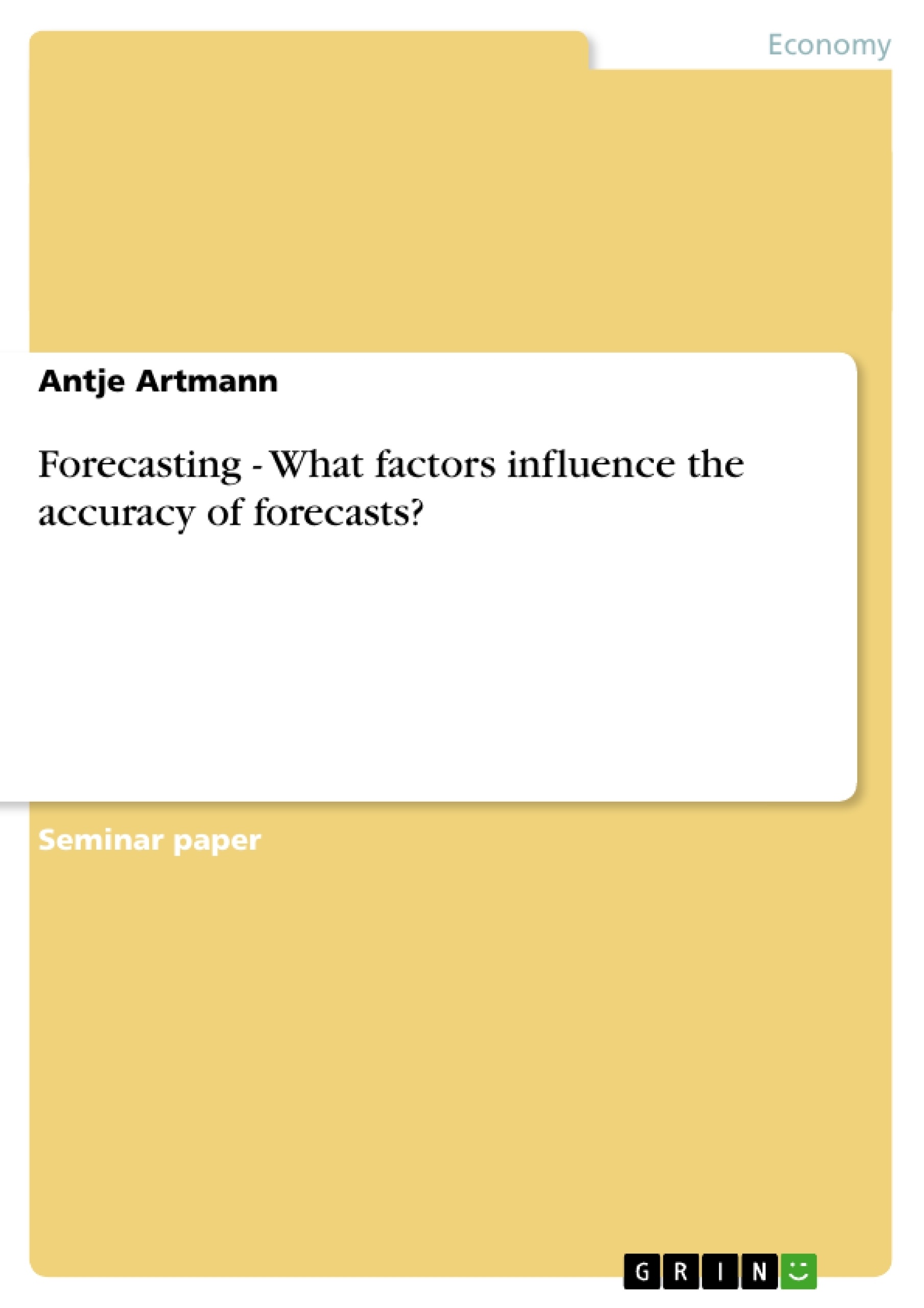In all aspects of our daily live, we seek to anticipate or forecast events. Especially organizations and companies are engaged in producing and using a full range of different economic forecasts. The widespread usefulness and application of forecasting systems and statistical and econometric modeling techniques has become solidly entrenched. Being aware of this fact, has led to a fundamental need for better quantitative analysis and business planning. Private and public sectors alike have found it both practical and essential to employ more rigorous analytical framework. Accordingly, more sophisticated forecasting techniques to enhance the level of predictability and confidence are required to foresee future events.
The need for such forecasts arises because people are taking positions and enter into commitments about the future. Therefore, a need to form a view about the possible future consequences of these positions or commitments exists. Thus, in economic and business life, forecasts are essential, and errors can be very costly. According to those facts, now the question arises: What factors influence the accuracy if forecasts? In the following paper, three different forecasting methods will be explained and evaluated according to their accuracy.
There exist diverse techniques of forecasting; those methods may be either formal or intuitive. Nevertheless, as the future is unknown, all forecasting systems rest ultimately on learning from the past. There exist naïve processes extrapolating the past in a simple way. But those will be prone to error when the world changes. More sophisticated methods seek to foresee change by understanding the source of past changes, and therefore incorporate change in the forecast. The standard output from macro models is a central forecast, that is, a prediction of the most likely path for the variables of interest. But these central forecasts are subject to appreciable uncertainty, and this needs to be taken into account in using them. One way to do so is to associate with the central forecasts an estimate of their possible error.
Inhaltsverzeichnis
- INTRODUCTION
- TIME SERIES
- TIME SERIES
- SIMPLE REGRESSION
- MULTIPLE REGRESSION
- CONCLUSION
- REFERENCE LIST
Zielsetzung und Themenschwerpunkte
Diese Arbeit befasst sich mit der Frage, welche Faktoren die Genauigkeit von Prognosen beeinflussen. Sie untersucht verschiedene Prognosemethoden und bewertet deren Genauigkeit. Die Arbeit analysiert Zeitreihenmodelle, einfache Regression und multiple Regression als wichtige Methoden zur Prognose von wirtschaftlichen und betriebswirtschaftlichen Ereignissen.
- Einführung in die Prognosemethoden
- Bewertung der Genauigkeit von Prognosemethoden
- Analyse von Zeitreihenmodellen
- Untersuchung der einfachen Regression
- Bewertung der multiplen Regression
Zusammenfassung der Kapitel
Das erste Kapitel führt in das Thema der Prognose ein und erläutert die Bedeutung von Prognosen in verschiedenen Bereichen. Es wird die Notwendigkeit von Prognosen in der Wirtschaft und im täglichen Leben hervorgehoben und die verschiedenen Arten von Prognosemethoden vorgestellt.
Das zweite Kapitel befasst sich mit Zeitreihenmodellen. Es beschreibt die verschiedenen Arten von Zeitreihenmustern, wie stationäre, nicht-stationäre und saisonale Muster, und erläutert die Anwendung von Zeitreihenmodellen zur Prognose.
Das dritte Kapitel behandelt die einfache Regression. Es beschreibt die Grundprinzipien der einfachen Regression und erläutert die Grenzen dieser Methode bei der Prognose von komplexen Phänomenen.
Das vierte Kapitel befasst sich mit der multiplen Regression. Es beschreibt die Vorteile der multiplen Regression im Vergleich zur einfachen Regression und erläutert die Anwendung dieser Methode zur Analyse von Zusammenhängen zwischen mehreren Variablen.
Schlüsselwörter
Die Schlüsselwörter und Schwerpunktthemen des Textes umfassen die Prognosegenauigkeit, Zeitreihenmodelle, einfache Regression, multiple Regression, Wirtschaftsprognose, Unternehmensentscheidungen und Datenanalyse. Die Arbeit untersucht die Faktoren, die die Genauigkeit von Prognosen beeinflussen, und analysiert verschiedene Methoden zur Prognose von wirtschaftlichen und betriebswirtschaftlichen Ereignissen.
- Citar trabajo
- Antje Artmann (Autor), 2001, Forecasting - What factors influence the accuracy of forecasts?, Múnich, GRIN Verlag, https://www.grin.com/document/4535
-

-

-

-
¡Carge sus propios textos! Gane dinero y un iPhone X. -

-
¡Carge sus propios textos! Gane dinero y un iPhone X. -

-
¡Carge sus propios textos! Gane dinero y un iPhone X. -

-
¡Carge sus propios textos! Gane dinero y un iPhone X. -

-
¡Carge sus propios textos! Gane dinero y un iPhone X.

